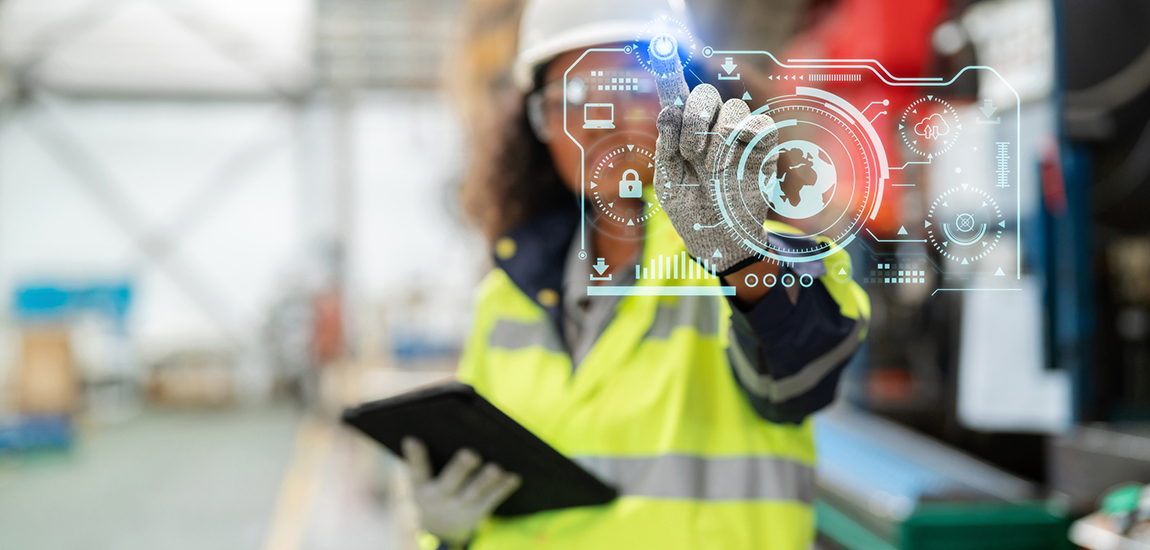On World Day for Safety and Health, commemorated every year on April 28, we reflect on the challenges and opportunities of artificial intelligence for preventing occupational hazards.
The International Labor Organization (ILO) annually commemorates World Day for Safety and Health on April 28. To this end, this year it launched the campaign “Revolutionizing health and safety with AI and digitalization at work” on how new technologies are transforming occupational safety and health. Thus, in 2025, the ILO is focusing on analyzing the extent to which digitalization can improve occupational safety and health, and how the emergence of digital safety systems can revolutionize this field.
For the ILO, new technologies are transforming this area by automating tasks or creating monitoring systems. The emergence of these systems influences the management and improvement of health and safety of employees, as well as the nature, location, and organization of work.
It is therefore pertinent to consider whether artificial intelligence (AI) can be used for the most basic preventive tasks, predictive development and the design of safer environments, and even for occupational risk assessment or training.
There are no legal obstacles to the use of AI to comply with legal obligations for occupational risk prevention, and it is particularly useful for those requiring technical knowledge: technical prevention staff can rely on the tools offered by AI to identify and assess risks.
To comply with the obligation to train staff in prevention matters, established in article 19 of Ley 31/1995 on Occupational Risk Prevention, according to which such training must be sufficient and appropriate, AI could be valuable in enabling the relevant technical personnel to define its content, adapted to the needs of each company. In addition to these uses, AI enables the design of new digital safety systems for work equipment.
In addition to these applications, AI enables the design of new digital safety systems for work equipment. The European Agency for Safety and Health has defined these systems as those that use digital technologies to collect and analyze data to identify and assess risks, prevent and/or minimize damage, as well as promote occupational safety and health. For example, when applied to forklifts, there are AI tools that can predict their trajectory and identify potential pedestrians they could collide with, avoiding a potential accident.
The emergence of these systems is changing the workplace, as they allow for systematic, comprehensive, and more precise recognition and measurement of data, thereby helping to reduce employees’ exposure to occupational hazards.
In this context, the European Agency for Safety and Health (EAH) has been analyzing the challenges and opportunities of these systems for the prevention of occupational risks and, specifically, launched a campaign called “Safe and Healthy Workplaces in the Digital Age 2023-2025” under which it has published various reports on the subject, as well as guides for the implementation of these systems seeking to improve occupational safety and health. Specifically, in its report of the end of 2024, in which it analyzed these systems—taking into account those employees with specific needs (aging, diversity and inclusion in the workforce, single or inexperienced workers) and the emergence of remote work—this agency concluded that new monitoring systems are part of the solution, but it is necessary to involve occupational safety and health professionals and promote employees involvement.
AI, therefore, as in other areas, is a good tool that companies can rely on to meet their occupational risk prevention obligations, but it does not replace the work of health and safety professionals or the essential training efforts of staff to increase their involvement. Furthermore, the legal and policy frameworks regulating these areas must keep pace with the rapid evolution of digital tools and the impact of their use in the workplace to better assess the impact of digitalization on employees’ rights, working conditions, and occupational health and safety.
Rosario Rodríguez de la Morena






